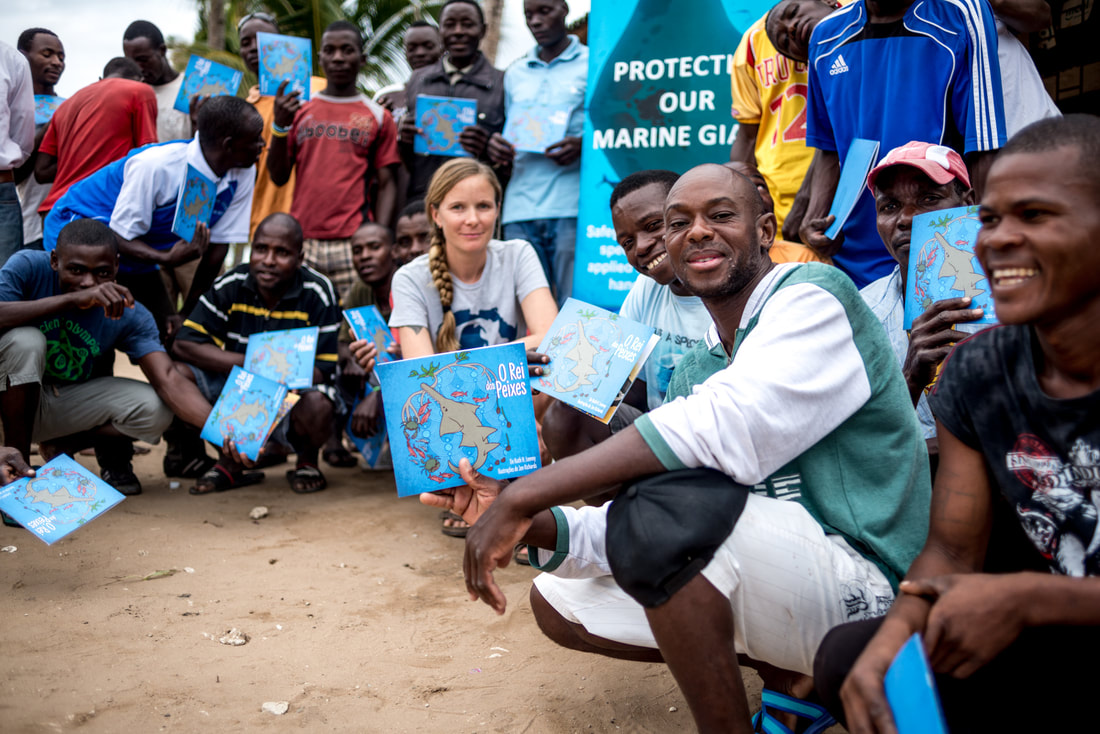How to Conduct a Rapid Assessment for Sawfishes
Sawfishes are the most threatened family of sharks and rays. All five species are under threat and are possibly extinct in numerous countries. Urgent action is needed to ensure their survival. The Shark Specialist Group recognizes that some countries have not been surveyed and needs your help to determine if sawfishes were either historically present and/or if populations still persist. As a traveler or traveling scientist, you can help us by conducting a rapid assessment while undertaking your field work or visiting these countries.
There are a range of technical methods for surveying for sawfishes, such as fishing or eDNA surveys. These are beyond the scope of the average traveling scientist. Many scientists are based in sawfish range states working on turtles, cetaceans, sireneans, crocodiles, shorebirds, and fisheries. You may be working with local fishing communities, if so you have a chance to help with the great sawfish search.
On your travels, or if you are a scientists working with local people, please consider asking them what they know about sawfishes. Show them pictures of sawfishes and ask whether they know about or have seen these species. Sawfish rostra are often retained by fishermen as 'keepsakes' or placed in scientific collections or museums, so ask whether they have any rostra.
If they know of sawfishes, check that they are not confusing sawfishes with sawsharks, swordfishes, or even guitarfishes. Most importantly, ask when they last caught a sawfish, or last knew of a sawfish being captured. People often believe that species are still present and asking about the date of last capture can be informative.
If you have an opportunity to ask such questions, find recent or historical photographs, or have any new information on sawfishes then please let us know: [email protected]
There are a range of technical methods for surveying for sawfishes, such as fishing or eDNA surveys. These are beyond the scope of the average traveling scientist. Many scientists are based in sawfish range states working on turtles, cetaceans, sireneans, crocodiles, shorebirds, and fisheries. You may be working with local fishing communities, if so you have a chance to help with the great sawfish search.
On your travels, or if you are a scientists working with local people, please consider asking them what they know about sawfishes. Show them pictures of sawfishes and ask whether they know about or have seen these species. Sawfish rostra are often retained by fishermen as 'keepsakes' or placed in scientific collections or museums, so ask whether they have any rostra.
If they know of sawfishes, check that they are not confusing sawfishes with sawsharks, swordfishes, or even guitarfishes. Most importantly, ask when they last caught a sawfish, or last knew of a sawfish being captured. People often believe that species are still present and asking about the date of last capture can be informative.
If you have an opportunity to ask such questions, find recent or historical photographs, or have any new information on sawfishes then please let us know: [email protected]
Sawfish Specific Survey
If you are interested in developing a sawfish specific survey then read on. The publications listed below provide greater detail on the methods other researchers have developed and used to assess the presence and conservation status of sawfishes (and other rare animals), primarily using interviews. Please be aware that there is no one, single prescriptive approach or interview structure that will work for every study. The interview structure should be developed in collaboration with colleagues or collaborators from the area in which you intend to work, who have a good understanding of local fisheries, culture, sensitivities, and levels of education of your intended interviewees.
If you have not conducted interviews before, we recommend reading some standard social scientific texts to get an understanding of the skills required, possible pitfalls, and how to develop questions that are most likely to elicit the information you need.
Click here to see the Sawfish Conservation Society's identification guides for sawfishe
If you have not conducted interviews before, we recommend reading some standard social scientific texts to get an understanding of the skills required, possible pitfalls, and how to develop questions that are most likely to elicit the information you need.
Click here to see the Sawfish Conservation Society's identification guides for sawfishe
Examples
- Gill et al. (2008) Methods of data collection in qualitative research: interviews and focus groups. British Dental Journal 204: 291-295
- Dulvy, N.K. and Polunin, N.V.C. 2004. Using informal knowledge to infer human-induced rarity of a conspicuous reef fish. Animal Conservation 7:365-374.
- Leeney, R.H. 2017. Are sawfishes still present in Mozambique? A baseline ecological study. PeerJ 5:e2950; DOI: 10.7717/peerj.2950
- Leeney, R.H. and Downing, N. 2016. Sawfishes in the Gambia and Senegal–Shifting baselines over 40 years. Aquatic Conservation: Marine and Freshwater Ecosystems 26(2): 265-278.
- Leeney, R.H. 2016. Fishers’ ecological knowledge of sawfishes in Lake Piso, Liberia. Aquatic Conservation: Marine and Freshwater Ecosystems 26(2): 381-385.
- Leeney, R.H. and Poncelet, P. 2015. Using fishers’ ecological knowledge to assess the status and cultural importance of sawfish in Guinea-Bissau. Aquatic Conservation: Marine and Freshwater Ecosystems 25(3): 411-430.
- Leeney, R.H., Dia, I.M., and Dia, M. 2015. Food, pharmacy, friend? Bycatch, direct take and consumption of dolphins in West Africa. Human Ecology 43(1):105-118.
- Hossain, M.D.A., Thompson, B.S., Chowdhury, G.W., Mohsanin, S., Fahad, Z.H., Koldewey, H.J. and Islam, M.D.A. 2015. Sawfish exploitation and status in Bangladesh. Aquatic Conservation: Marine and Freshwater Ecosystems 25(6): 781-789.
For a comprehensive list of historical and recent sawfish publications, visit the Sawfish Conservation Society's website.
Thanks to Shark References for hosting a very useful publication database dedicated to the sawfishes:
- Fossil (extinct) sawfishes: http://shark-references.com/post/728
- Extant sawfishes: http://shark-references.com/post/722

